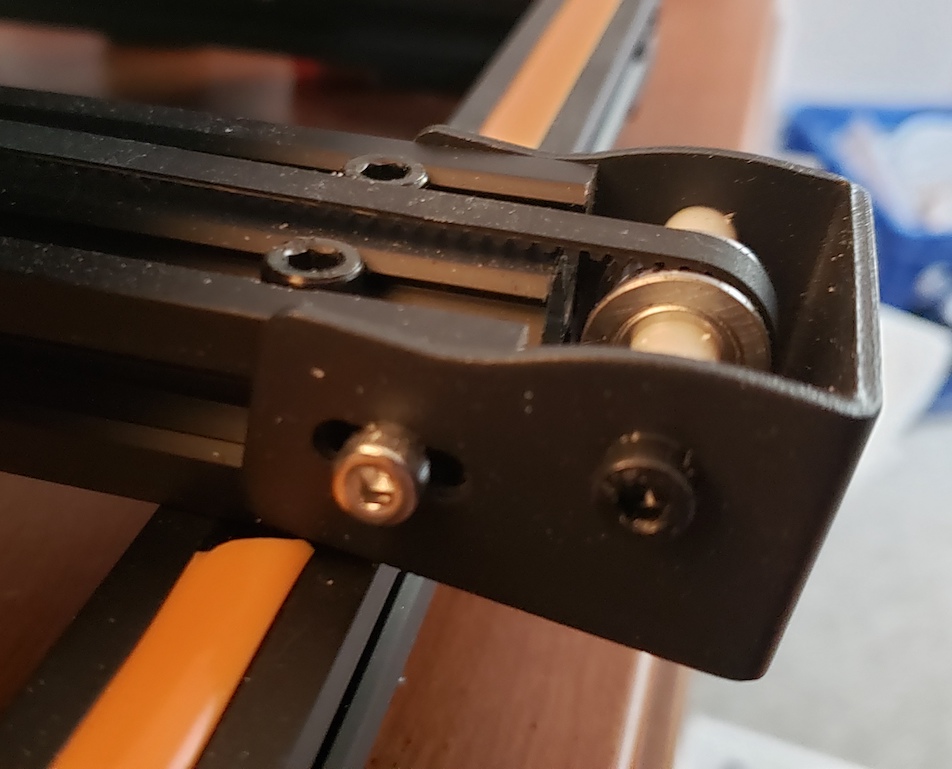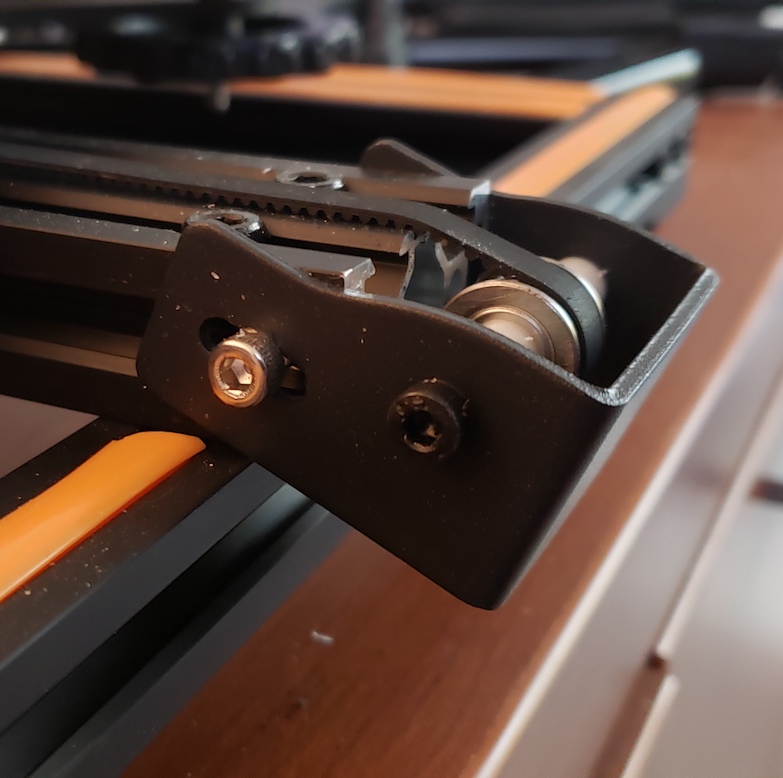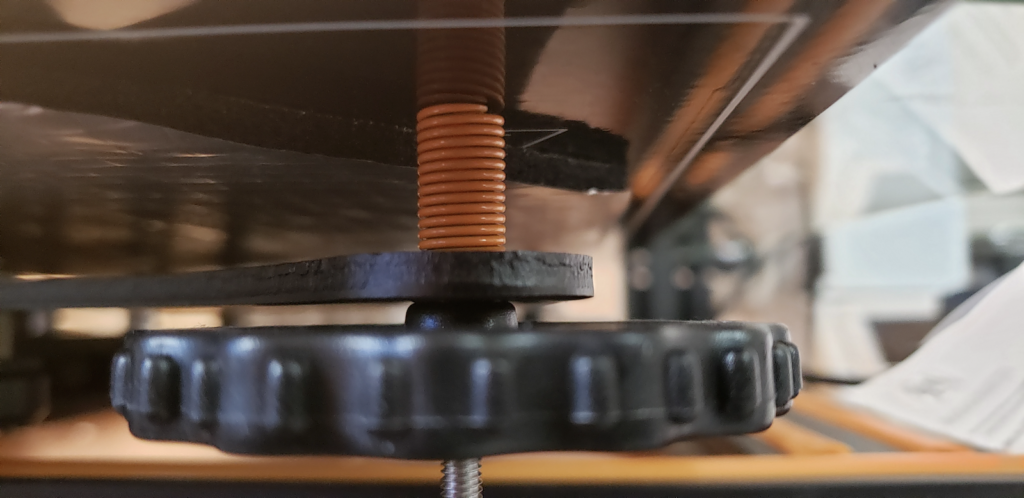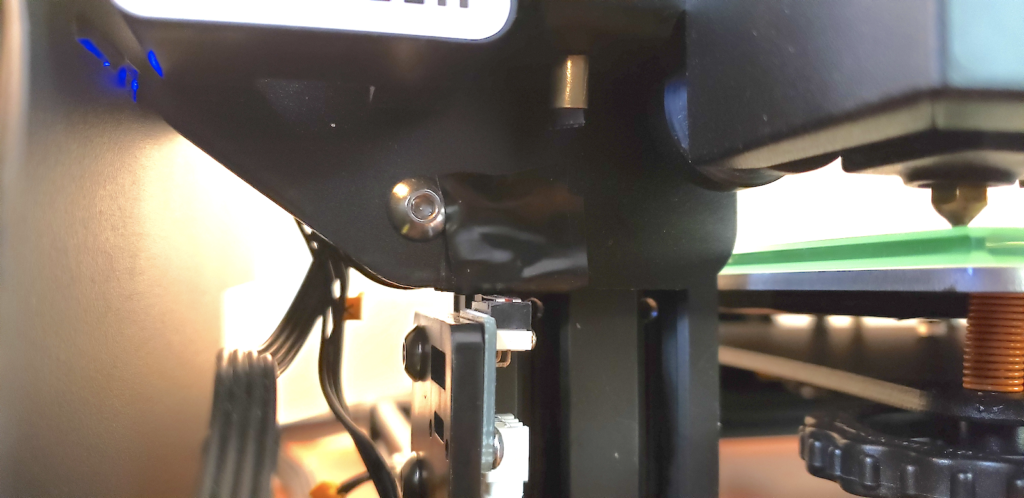About 6 months ago I bought a Creality CR-10 3d Printer. All the cool kids were using 3d printers for just abouyt everything, I was starting to feel left out. Our makerspace has some great printers, but with the pandemic (and also that the space was 45 minutes away), I wanted something nearby that I could tinker with on my own time.
Secondarily, there’s something attractive about being your own fabricator. Having a printer means I can manufacture my own items. That’s pretty cool. I needed to learn how to do that.
For the most part, the printer works great. 3d printing with PLA is not a fast process. Most prints take hours to complete. The CR-10 worked like a champ though. Prints were clean, the end results were useable, and the machine was dependable and easy to manage. I learned to use Ultimaker Cura to set up the jobs and all was well.
I didn’t print anything for a month or so, then went back to print some cable runners to try and organize my desk wiring a bit. When home-ing the print bed, I heard a sort of chattering / stuttering noise during Y axis motion:
I didn’t think much about it, but the print failed with layers shifting in a weird way. Obviously something was wrong.
I spent some time trying to find problems with wiring, stuff blocking the motion of the stepper – nothing was obvious. It was weird though, because the chattering would only happen in one direction, and even odder, it happened when the printer was completely powered off. Moving the bed by hand would cause this sound even when nothing was powered up.
Hmmmmm.
Yesterday I decided enough was enough. Posting on reddit asking for help got no good feedback. I submitted a bug report to Creality, unsurprisingly, I never even got an acknowledgement to the message. I chatted with friends who suggested stepper motor failure, bed misalignment, power supply problems – a whole host of things. None of these were it.
Turns out, like so many things, it was something stupid.
On the front of the Y axis travel arm, there’s a bracket that holds the pully for the belt. This bracket ‘sticks out’ from the frame of the printer, and apparently, somewhere along the line, I had bumped into this bracket, pushing it down about a cm. That was enough to have the belt rub against the end of the track. Travel in one direciton was smooth, but in the other, the teeth on the belt would catch on the end of the track.


The answer of course was to just move the assembly up into the right position, and BEHOLD! No chattering, no stuttering, no problems. Thus ended a month of having the printer mocking me in its uselessness.
I did, however, run into one other problem. Bed levelling is the nemesis of any 3d printer owner. It can be tedious and time consuming, but is absolutely critical to getting good, solid, well formed prints.
On the CR-10, levelling is accomplished via a set of wheels under the bed that compress set of strong springs to get the bed where you want it. In this case, the springs were 100% compressed, and I couldn’t get enough clearance between the glass and the print head. In the past I was able to wrangle enough slack to make it happen, but today, maybe due to humidity or whatever, I just couldnt’ get it to clear.

I solved the problem by essentially raising the 0 position on the Z axis stepper. Because there’s no built-in function to do this on the printer, but being the ever adaptive type, I made do with 4 strips of electrical tape, added to the Z gantry just above the homing switch. This effectively told the printer to stop the the print head about a mm higher than it had before, thus giving me some working room to adjust the bed

Conclusions
I really do like the CR-10. When it’s running, it’s rock solid, and prints like a dream. I’m hoping to do some mods to it once the office situation settles down a few notches, but right now I’m just happy to have a working, non-chattery, dependable machine again.